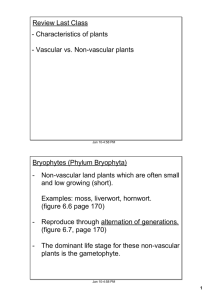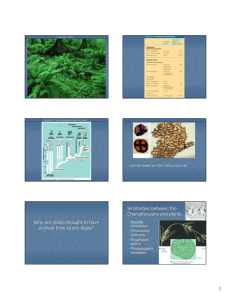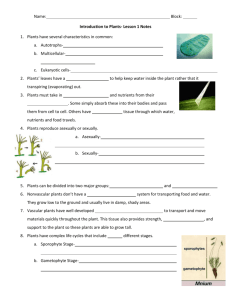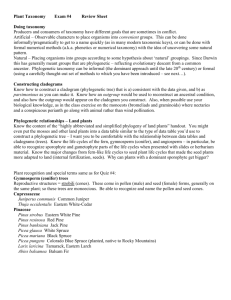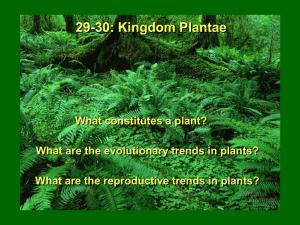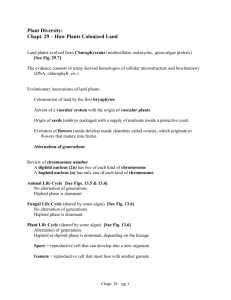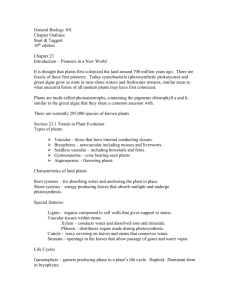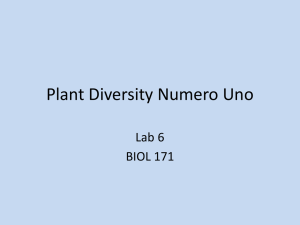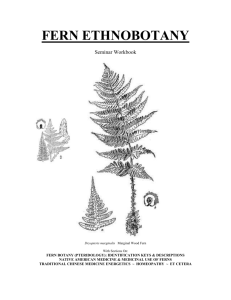Plants2 - Faculty
advertisement
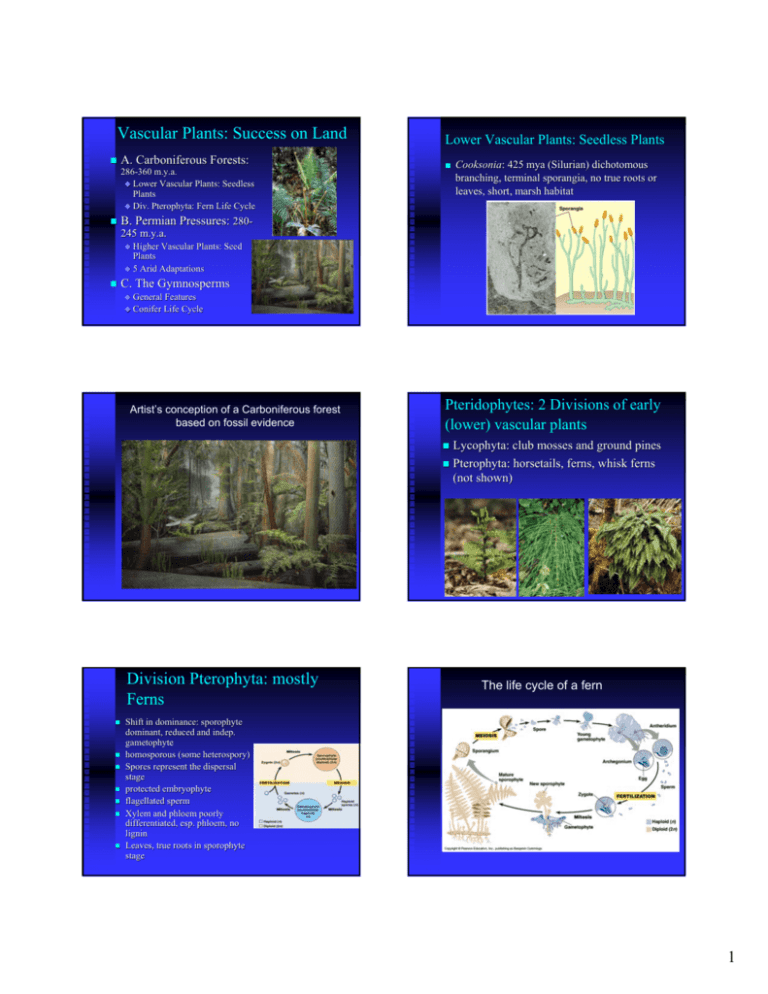
Vascular Plants: Success on Land A. Carboniferous Forests: 286286-360 m.y.a. Lower Vascular Plants: Seedless Plants Div. Pterophyta: Fern Life Cycle Lower Vascular Plants: Seedless Plants Cooksonia: Cooksonia: 425 mya (Silurian) dichotomous branching, terminal sporangia, no true roots or leaves, short, marsh habitat B. Permian Pressures: 280280245 m.y.a. Higher Vascular Plants: Seed Plants 5 Arid Adaptations C. The Gymnosperms General Features Conifer Life Cycle Artist’s conception of a Carboniferous forest based on fossil evidence Pteridophytes: 2 Divisions of early (lower) vascular plants Lycophyta: Lycophyta: club mosses and ground pines Pterophyta: horsetails, ferns, whisk ferns (not shown) Division Pterophyta: mostly Ferns The life cycle of a fern Shift in dominance: sporophyte dominant, reduced and indep. indep. gametophyte homosporous (some heterospory) heterospory) Spores represent the dispersal stage protected embryophyte flagellated sperm Xylem and phloem poorly differentiated, esp. phloem, no lignin Leaves, true roots in sporophyte stage 1 Life cycle of a fern: mature fern Fern sporophyll, a leaf specialized for spore production Life cycle of a fern: sporangium Fern sporophyll, a leaf specialized for spore production Life cycle of a fern: sorus Life cycle of a fern: mature sporangium 2 Life cycle of a fern: germinating Higher Vascular Plants: Permian Seed Plants: Gymnosperms and Angiosperms Adaptations to a dryer environment: More specialized vascular tissue Reduction and retention of the gametophyte ) Spores for dispersal? ) Diploid dominance? Complete change from homospory to heterospory Pollen Seeds: dispersal, multicellular, nucellus, nucellus, protected embryophyte The advantages of seeds: 1. Multicellularity 2. Female gametophyte = egg + nutrients 3. Protected & nourished embryophyte 4. Delayed development 5. Multicellular dispersal tool Life cycle of a fern: gametophyte Three variations on gametophyte/sporophyte relationships Hypothetical phylogeny of the seed plants 3 Gymnosperms: 4 Divisions Phylum Ginkgophyta: Ginkgo biloba Cycadophyta, Cycadophyta, Ginkophyta, Ginkophyta, Gnetophyta and Coniferophyta Conifers: General Features Largest division Commercial value Evergreen status Needles: leaf adaptation to arid conditions, continuous growth Phylum Cycadophyta: cycads Ginkgo: Male (left), female (right) Phylum Gnetophyta: Welwitschia Phylum Gnetophyta: Gnetum 4 Phylum Gnetophyta: Ephedra Gymnosperm Life Cycle Phylum Coniferophyta: Wollemia pine The life cycle of a pine Pine tree = mature sporophyte Heterospory = male and female cones Male cone: microsporangia divide meiotically haploid microspores mitosis yields 2 celled pollen grains = immature male gametophyte Female cone: ovule contain megasporangia megasp. megasp. Mother cells undergo meiosis one n cell survives 1000’ female gametophyte (also 1000’s of mitoses contains 22-3 archegonia w/ one egg cell each Pollination Fertilization: mitosis of pollen grain yields 2 sperm nuclei pollen tube both injected into one egg, one disintegrates and diploid zygote forms Seed: 3 generations under one roof. Cycle time = 1010-12 years The life cycle of a pine The life cycle of a pine 5 Pine embryo 6
